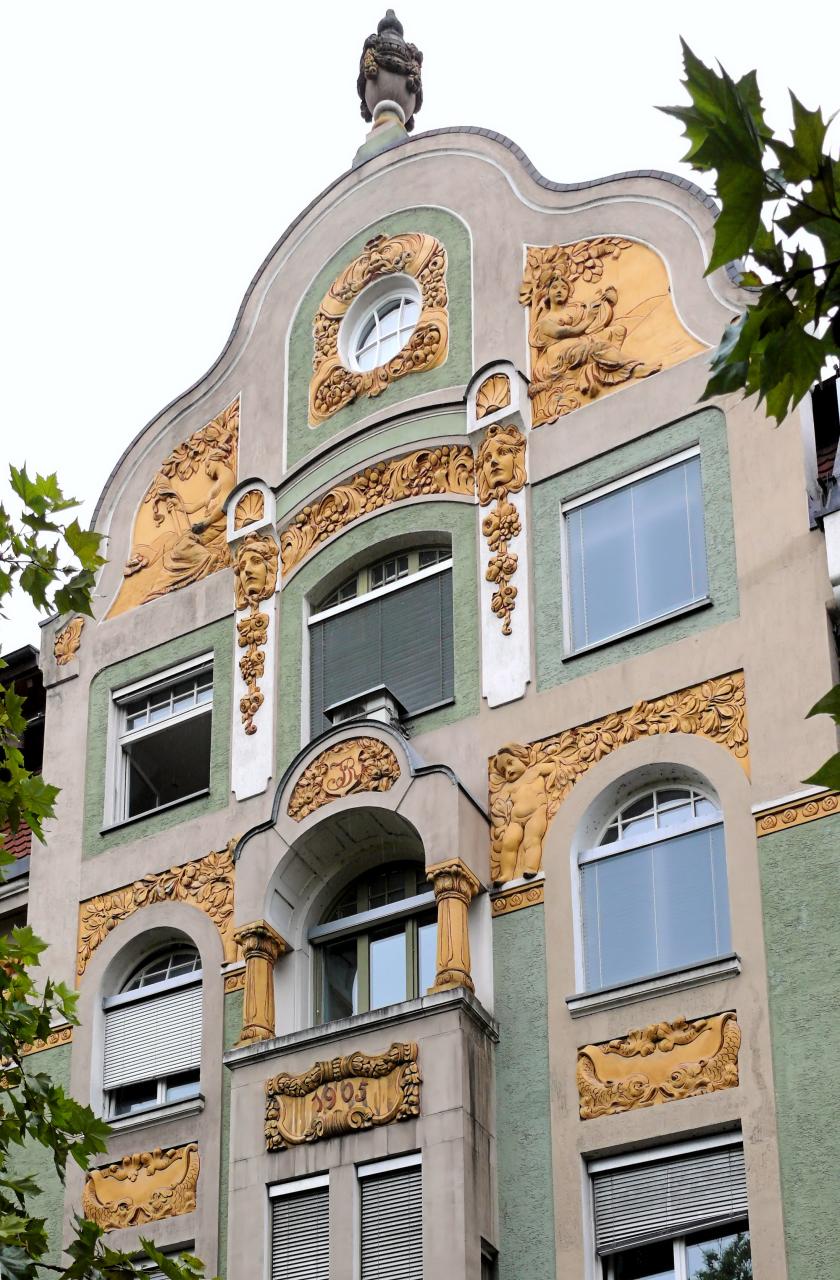#4307. Elegant Jugendstil facade from 1905 with fluid pediment and rich stucco ornamentation
Before us stands an exquisite example of Jugendstil (the German variant of Art Nouveau) from the early 20th century. The building's facade exemplifies the characteristic fluidity of forms and rich decorative elements typical of this style. The upper part of the building is crowned with a wavelike pediment with smooth curves, giving the composition a distinct expressiveness.
The facade is executed in a delicate pale green color scheme, which effectively contrasts with the abundant golden-beige stucco ornaments. Particularly notable are the relief panels depicting mythological creatures and floral motifs characteristic of Art Nouveau aesthetics. The pediment and entire facade feature decorative inserts with elegant stucco work in the form of female faces, flower garlands, and volute-shaped curls.
An interesting element is the sculptural decoration of the central part of the facade, where a balcony with semi-classical columns is located. The panel beneath the balcony shows the date "1905," indicating the year of the building's construction. Windows of various shapes and sizes are harmoniously integrated into the overall composition and framed with decorative elements.
A small sculptural composition crowns the building, completing the architectural vertical and giving the structure magnificence and solemnity. The architectural solution demonstrates a delicate balance between the functionality of an urban residential building and the decorative sophistication characteristic of the Art Nouveau era.
